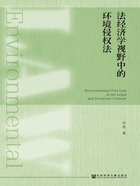
Abstract
China’s environmental tort law is a work in progress,with various types of problems in terms of liabilities,force majeure,elements of negligence,burden of proof,causation,compensatory damages,punitive damages etc. Vagueness,ambiguity,loopholes and legal conflicts in the law not only have caused distress to judicial practice,but also controversies in theory. In the meantime,the pursuit of “fairness”,“justice” or “protection of vulnerable groups” in environmental tort law is nothing more than a fruitless pursuit of moral instincts. In contrast,aiming at efficiency or maximizing the overall welfare of society,economic analysis theory is more capable of providing clear guidance to decision makers. According to law and economics analysis,the most important function of environmental tort law is neither to provide relief nor to compensate damage,but to create optimal incentives for the parties to avoid the risk of pollution at reasonable cost. The economic objective of the environmental tort legal system is thought as minimizing the sum of three types of costs:the cost of pollution losses,pollution prevention cost and system management cost,and the means to achieve this objective is a reasonable allocation of cost among the parties,as well as a reasonable allocation of burden of proof. Based on this theory,I conduct an efficiency evaluation of the main elements of the environmental torts. Subsequently I will offer some legislative and judicial suggestions,and clarify some misunderstandings in the traditional environmental tort law theory.
In chapter one and two,I will discuss several basic issues of the economic analysis of environmental tort law:the economic essence of environmental tort law,its policy objectives,the form of rules and analysis framework. In my analysis,the Kaldor-Hicks criterion is the normative goal for environmental tort law. A compromise between the various targeted cost must be made to achieve the policy objectives. Although China’s environmental tort law stipulates both property rules and the rules of liability,in judicial practice liability rules rather than property rules is more relevant in terms of improving efficiency.
In chapter three,I will discuss the liability rule of environmental tort law. After an analysis of related law,I argue that the principle of strict liability plus the principle of fault liability are the legal principle of environmental tort law in China. The essence of the principle is not strictly liability rather than liability of negligence,which consistent with the principle of efficiency. At present,the main problem of the legal practice of the environmental tort law lies in the contradiction between legislation and judicial practice.
In chapter four,I will discuss the duty of care. Traditional tort law and the theory of law and economics have different views on the nature of “negligence” and the criterion of judgment:the traditional tort law defines “negligence” as a state of mind;law and economics defines “negligence” as a kind of behavior,which is using “Hand formula” as the duty of care. By contrast,“the Hand formula” standard has the advantage of operability and can be applied repeatedly. I take the “Hand formula” as the standard to evaluate the efficiency of the “fault” standard in China’s environmental tort law practice and provides solutions for relevant problems.
In chapter five and six,I will discuss the allocation and testification of the evidential burden of environmental tort causality. That “the low-cost party is responsible” is the efficiency principle that is established for the allocation of evidential burden of causality according to the legal and economic theory. Based on this principle,the application of causality presumption in environmental tort law is efficiently legitimate in the absence of counter evidence. In fact,The Supreme People’s Court has replaced “the allocation principle of causality presumption of evidential burden” by “an alleviation system of evidential burden causality” through the Judicial Interpretation of Tort Law and the Judicial Interpretation of Environmental Tort. Affirming the system efficiency of the alleviation system of evidential burden causality,this paper puts forward the corresponding legislative suggestions and judicial solutions.
The testification of causality is a difficult issue in the theoretical research and juridical practice of evidence law. This paper holds that the substantive justice embodied in reasonable cost,formal justice and specific analysis of specific issues is the key point of causality testification in the juridical practice of environmental tort.
The seventh chapter mainly discusses the environmental compensatory damages. The economical expression of “Damages with relief” is the perfect compensation. Viewing from the practice of environmental tort of all the countries from the whole world(including China),we can see the ubiquity of the defects of the relief compensation. Suffered the restrict of various factors,the normative objectives of “Damages with relief” is just the ideal system but not the reality. The generic factors which influence the fulfillment of the perfect compensation will be analyzed in the first section. With the studies of the practice of environmental torts,the second and third section will focus on the specific reasons,which caused the defects of the relief compensation of the “compensable losses” and the “incompensable losses”,and offer a serious of related advice.
The eighth chapter will refine the issues of environmental torts punitive damages into three sub-problems. Firstly,the necessity of its introduction into environmental torts;secondly,the theory basis of the system construction;thirdly,the specific method of the system construction,including legislation and judiciary application.
The concluding part of this paper analyzes,summarizes and summarizes the institutional advantages and limitations of environmental tort law in solving environmental problems.
Keywords:environmental tort law;economic analysis;efficiency;legal practice